What Determines How Quickly a Flash Is Ready to Fire Again
Become started understanding flash triggers and receivers and upwardly your off-photographic camera flash game!
Wink photography feels actually intimidating at kickoff. There are all these different settings and terminology. Taking your flash off-photographic camera and shooting wirelessly? That seems even more overwhelming! Triggers, receivers, signals, groups…but argh! I know plenty of photographers who quit even trying to understand and never venture beyond natural light. But don't quit…endeavour reading this beginner'due south guide to understanding wink triggers and receivers instead!
In this tutorial, I'm going to give you a basic rundown of 1 element of using off-camera flash…understanding flash triggers and receivers. Y'all'll acquire what they are, how they work, what groups and channels mean and a few troubleshooting ideas for when you get stuck.
So let's leap correct in.
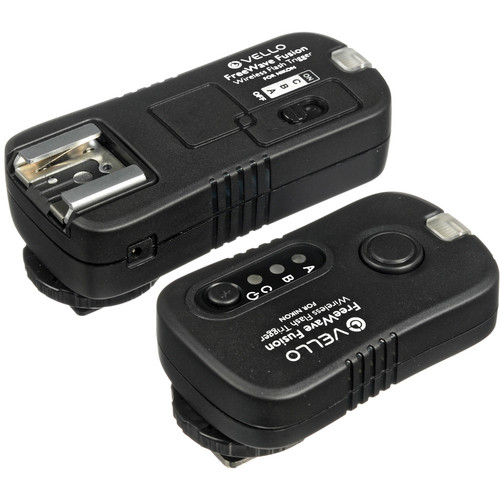
Why exercise you need wink triggers and receivers?
Sometimes our scene needs extra light, which we innovate through the use of flash. For the maximum control, flexibility and power, photographers use off-camera flash. Off-photographic camera flash means the flash (either a speedlight or strobe) is located somewhere other than on superlative of your photographic camera. That flash could be on a low-cal stand three anxiety from you or held by an assistant xxx feet away from you lot. Either manner, that's off-photographic camera flash.
But nosotros demand the flash to fire when the shutter fires on the photographic camera. That's what'due south giving the states that extra lite after all. So we utilize a trigger on the camera to transport a signal to the wink (FIRE!) and a receiver on the flash to translate the bespeak (FIRE!). Thinks of them every bit sort of a walky-talky system for your camera and flash. And like walky-talkies, they use radio channels to communicate.
How your photographic camera/trigger/flash communicate
The photographic camera talks to the flash three different ways: via infrared signals (which are sent optically) or via radio signals. There's also a hybrid method, just nosotros aren't going to go into that right now for simplicity purposes.
Infrared is less expensive and works great some of the time. Simply because it is an optical signal, the camera and wink have to really run across each other and have line of sight. Shooting outdoors in bright sunlight or indoors in weird lights (recollect DJ disco ball) affects the communication. And sometimes some other flash firing in the room trips your flashes.
Many photographers, then, choose to use radio communication. Radio based devices don't require line of sight, they are more reliable and won't be ready off past someone else'south flash. Their disadvantages include cost and the learning curve of setting them upwards. This tutorial talks most a radio-based trigger and receiver system to fire your flashes.
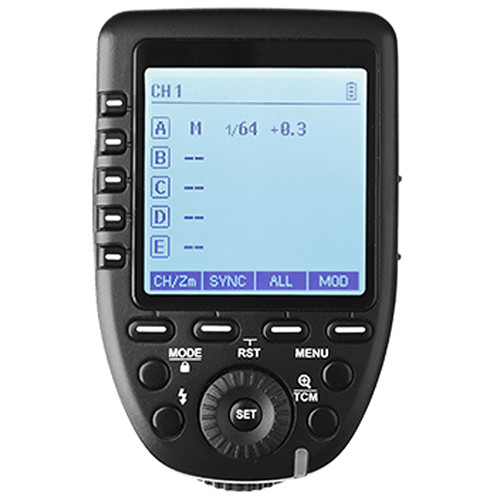
What are flash triggers? What practice flash triggers practice?
Flash triggers are the device the photographic camera uses to talk to the wink. The trigger is connected to your flash via the hot-shoe (that little subclass that sits on the top of your camera). When you fire the shutter, the camera sends out a footling electronic pulse to the trigger to actuate it. The trigger takes over from there.
Triggers come in lots of dissimilar makes and models. But there are ii basic styles of triggers. First, there are what we call manual or dummy triggers. These triggers control just what channel the indicate is sent on. If you desire to make other changes to the wink, though, yous need to do that on the flash itself. Click hither to see an instance of "dummy" triggers.
Other triggers are smarter. These triggers allow you to command more or even all the functions of the wink directly from your camera. A smart trigger, for example, might permit yous prepare flash ability, change the manner of the flash from manual to TTL or change the zoom. If I want to change the ability of the flash, I tin practice information technology from my "smart" trigger. If I wanted to change the flash with a transmission-but dummy trigger, I'd have to physically walk over to the wink and change the power.
Smart triggers are handy because you command everything right from the trigger on the top of your camera vs. walking to each flash and changing it manually. Click here for an case of a "smart" trigger.
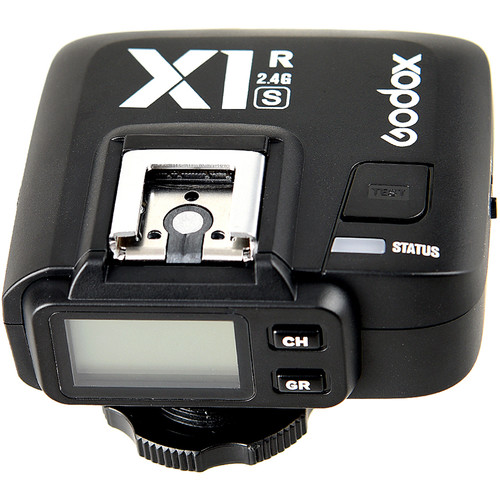
What do wink receivers practice?
Wink receivers are the device that attaches to your flash and receives and acts on the point from the trigger. Some flashes crave an external trigger to operate. But lighting manufacturers, like Godox, are starting to brand flashes with receives congenital into them.
Agreement flash triggers and receivers
Begin past putting your trigger on the camera and hooking up your receiver to the wink. Make sure both have fresh batteries. Some receivers connect to your flash via a cable. Check your receiver instruction manual to see the proper connection method. Seat the trigger and the receiver and plow them on BEFORE you lot turn on your camera or flash.
Next, turn on your wink and your photographic camera. And then choose what channel you volition be operating on. Set both the trigger and the receiver to the aforementioned aqueduct. Y'all tin can employ any channel you lot want, just brand certain it'south the same on both devices.
If your trigger/receivers/wink support multiple groups, ensure that the group attack the receiver/flash is enabled on your trigger.
Ensure your receiver can receive radio signals and that it's in transmission manner.
Now you're ready to see if everything is hooked up correctly.
Bank check to make sure the trigger and receiver are talking to each other by using the "Airplane pilot" or "Exam" button. If the flash fires, the trigger, and receiver are communicating correctly. If the flash fails to fire, double-check steps i and 2 to ensure right setup.
Next, arrange your camera settings as needed to enable flash. Then try taking a picture. Does the flash fire? If so, congratulations, you've got everything set upwards correctly and are ready to compose and set exposure.
Desire help setting exposure with flash? Check out our tutorial on using a greyness card!
If not, look for these items to troubleshoot.
- Is your trigger mounted correctly on your hot-shoe? Is it facing the correct way and fully seated on your camera?
- Ensure your receiver is connected to your camera correctly. Some crave the utilize of a cord. Make sure information technology's plugged into the right spot.
- Is flash manner enabled on your camera?
- Are y'all using the sync speed? Most cameras take a maximum shutter speed they can attain and still have the flash fire fully. Whatsoever faster and the flash can't terminate firing before the shutter closes. Most cameras have a maximum sync speed effectually 1/160 or 1/200 of a second. Make certain your shutter speed falls below that!
Using multiple lights
You tin can also fire multiple lights with a unmarried trigger on your photographic camera. Yous simply need some other flash with its own receiver built-in OR a second receiver that'southward compatible with your trigger.
To burn a 2nd light, connect the flash to the receiver and set it on the same channel/group as your first light. Firing your shutter should burn down information technology as well!
Understanding wink channels
To talk to each other, your trigger and receiver need to be on the same channel. What channel doesn't really affair, as long as they are both using the aforementioned channel.
So why switch channels?
First, someone else might be using a device in your area that'due south causing interference. If your flashes aren't firing consistently or are firing when you haven't pushed the push button, someone/something else might be interrupting. Move to a higher aqueduct and see if that doesn't help the situation.
Channels are also actually helpful if yous take multiple photographers with multiple lights in the same room. If each photographer sets their trigger/receiver/wink to a different aqueduct, each can operate his own set of lights independently of all the others.
Need help agreement what all those functions on your flash our? Cheque out our see-your-flash tutorial!
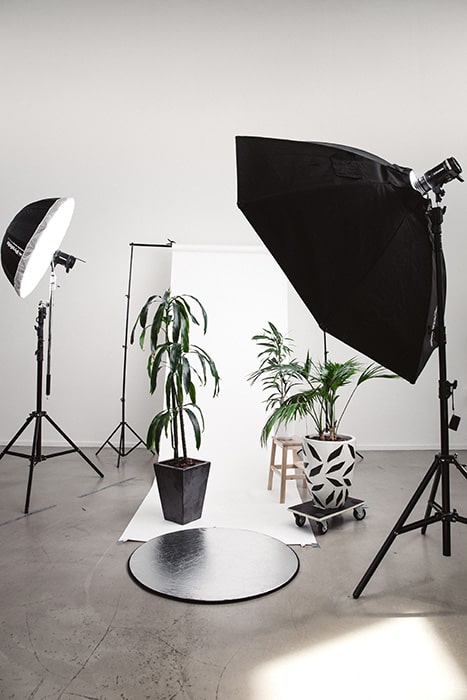
Understanding groups
In one case you've got the basics down of connecting a unmarried light to your camera via a trigger/receiver, information technology'southward time to wrap your head around groups. Groups are a second important component of understanding flash triggers and receivers.
Groups on a trigger let y'all to prepare different flashes to different exposure levels only burn them all at one time. Yous assign every wink a group letter. Your trigger will then fire every wink with that group letter of the alphabet at the same power/mode equally designated on the trigger. Groups as well permit yous to plow on and off dissimilar lights depending on what you might need at any given time.
Let'due south work through a few scenarios where groups come in handy.
Scenario A
Say I'yard shooting a prepare of school portraits. I desire to apply four lights, set as follows: the principal lite for my bailiwick, a fill lite to fill-in shadows, a rim light to accentuate the hair and provide separation from the background and a light that illuminates the groundwork. But each of these lights needs to be set at different powers. My main uses ¼ power, my make full uses i/sixteen, my rim light uses i/32 and my groundwork calorie-free uses ane/viii power.
If I'm using dummy triggers/receivers, I simply prepare my ability for each wink on the unit itself. With a "smart" trigger, I demand to assign each calorie-free a dissimilar group so it will burn down at the correct power. All my flashes would exist on aqueduct two merely each would be on a different group. So I could assign my chief light as A, fill light equally B, rim light every bit C and background calorie-free as D. My trigger fires all of them simultaneously simply each at its own assigned power.
Scenario B
In this scenario, I'yard shooting a wedding ceremony reception. I plan to use 4 speedlights to shoot the trip the light fantastic toe floor. Ii speedlights volition mount on light stands pointed direct up to bounce off the ceiling to fully illuminate the dance floor. I want to use two others to create some more dramatic portraits using backlighting. Ane will be on a calorie-free stand up, the other I want mounted on my camera. The problem is, I don't ever want all of them firing at once.
The solution is to use groups. I put my 2 bounce lights on a single grouping (Group A) because they volition utilize the same power. Then my backlight and on-camera low-cal tin can each use a different group (B and C respectively). Then as I progress through the reception I tin turn each grouping of lights on or off as needed.
Larn what'due south possible
"WAIT!" you lot're shrieking. "I can't even handle a single lite off-camera yet and you're talking 4 lights! Are you kidding me?"
You don't demand to accept four or v lights. You lot don't even need to accept ii as you kickoff on your off-camera flash learning journey and begin understanding flash triggers and receivers. And you don't take to understand why I'd set up my portraits/dance floor lights similar that right now.
The important matter is to know is what groups are and that you lot utilize them to control dissimilar lights (or groups of lights) in different ways. That way, when you lot are ready to start shooting multiple lights, you lot have a bones understanding of the concept and what'south possible.
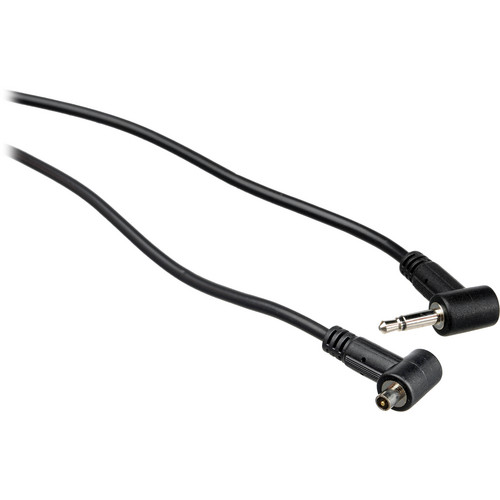
Troubleshooting Triggers and Receivers
If your flashes aren't firing as they should, hither are some troubleshooting items to check:
- Is everything turned on and plugged-in/connected correctly? As I said before, some receivers need a cord similar the 1 above to talk to the flash.
- Exercise you lot accept fresh batteries in your trigger/receiver/flashes (if you're non shooting ones that need plugging in.)
- Is your photographic camera enabled for wink?
- Are your triggers/receivers enabled for radio manual?
- Are your triggers/receivers on the same channel?
- Did you check that your triggers/receivers are on the aforementioned group?
- Is your flash in the right mode (i.e. non fix to slave style?)
- Is your camera's shutter speed fix below your maximum sync speed?
- If you are using infrared or optical triggering, does your equipment accept line of sight to the other device? Are there other light signals in the area that are causing interference?
How to Trigger An Off-Camera Flash with a Popup Trigger
No discussion on understanding wink triggers and receivers would be consummate without a word about using a popup flash or on-camera flash to burn down your other flashes. The light from the popup flash itself acts as a trigger.
There are a few ways you can do this. First, if your wink is compatible with your camera, you can put your camera'southward pop-up flash into commander mode (Nikon) or easy wireless (Catechism) and utilize it in lieu of a separate trigger.
The second way you lot can utilise your popup wink is as an optical trigger. You tin can also use a speedlight mounted on your camera's hot shoe as an optical trigger. Your off-camera flashes need slave mode enabled and line-of-sight to your popup or hot shoe flash. And so equally you hit the shutter, your on-camera flash fires which triggers the off-camera flashes.
This tin can be a great workaround if you lot don't have a radio trigger/receiver for each flash y'all ain. The drawback is that the light from your popup or on-camera wink is added to your scene. You also need line-of-sight communication. If the calorie-free from your pop-up flash isn't reaching your off-camera flashes, they won't fire. And as nosotros discussed before, other light signals might trip your flashes when you lot don't want them to.
Practice helps retentivity
Triggers and receivers and channels and groups can all feel overwhelming at first. The key is simply to exercise. The more you become out your equipment, set it up, get it firing and tear information technology down, the quicker it becomes second nature.
As you start working through multiple-low-cal setups, information technology might help to write it all down start. Think through how y'all're going to set your lights first. Write it down on a notecard. Then set up your lights referring to your notecard as needed. Soon, it will become second nature and you won't need the notecard!
Easier than programming your television
Mastering triggers and receivers isn't really any different than programming your tv'southward remote. It only seems complicated because of the force per unit area nosotros put on ourselves. Take some time to learn your equipment and practice with information technology at home. Before long yous'll be channel surfing and group surfing and agreement flash triggers and receivers with enthusiasm!
Source: https://www.colesclassroom.com/beginners-guide-to-understanding-flash-triggers-and-receivers/
0 Response to "What Determines How Quickly a Flash Is Ready to Fire Again"
Post a Comment